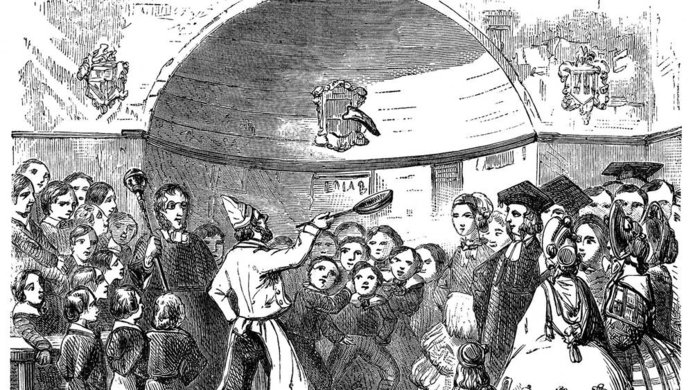Every business has a story. Some are clear-cut journeys from start-up to multinational. Others are more intricate and include mergers, takeovers, acquisitions, and dramatic changes in company direction. Not everyone spends time reflecting on their company’s journey, but could this be a big oversight? Stories allow people to reflect and to learn, and telling them can strongly influence how company stakeholders interpret change. “Companies can use storytelling as a learning tool to increase their productivity,” says Associate Professor Giada Di Stefano. “It can also be used to implement successful company transformations - to make sure that everybody is on board and excited about change.” See the video: “A universe of stories: Mobilising narrative practises during transformative change”, created by the Imperial College Business School.
Master storytelling at Alessi
There is no better example of a company that has used storytelling to successfully navigate its strategic transformation than the case of Italian housewares and kitchen utensil company, Alessi. From 1979 to 2010, CEO Alberto Alessi mastered the art of storytelling to lead his firm through a successful repositioning. The company went from being a manufacturer of steel serving tools for bars and restaurants to a world-renowned industrial design game-changer.
Companies can use storytelling as a learning tool to increase their productivity.
Over that time, Alessi produced iconic items so special that they have been featured in museums as objects of art. This evolution was documented in over 30 internally produced books. These allowed the firm to distribute stories to all its stakeholders, including the employees, customers, retailers, and visitors to Alessi’s exhibitions. They influenced both outsider and insider perceptions of the company’s trajectory. According to Di Stefano of HEC Paris and her colleague Elena Dalpiaz of Imperial College London, Alessi’s books provide an exceptional example of what happens when an organisation uses storytelling to reflect on its actions.
Three narrative practices increase impact
The duo conducted a thematic and narrative analysis of Alessi’s chronicles to understand how they were used, and how they changed, over time. They found that the books tell a coherent story, despite being written over three decades and by different authors with different goals. “Alessi’s story is like a woven fabric made by interlacing distinct sets of threads,” says Di Stefano. “Our analysis uncovers three narrative practices that enabled Alessi to create a single piece of fabric and tell the coherent story of a successful transformation.”
1. “Memorializing”: to create a shared understanding and memory of change over time, by identifying moments, persons, and events key to the transformation.
2. “Revisioning”: to rewrite the company’s past to ensure consistency with the current direction – and ensure that story is interesting, exciting, and inspiring.
3. “Sacralising”: to present the change as a transcendent endeavour, depicting the change leader as a prophet, organizational artefacts as icons, and the old strategy as conservative, or orthodox.
How storytelling and reflection lead to successful change
These three narrative practices were used consistently in Alessi’s books to prevent resistance to change, garner support for it, and mobilize advocacy. The strategy seems to have worked, as the transformation was widely supported, and even embraced, inside and outside the organization. “We ascribe many of the reasons for Alessi’s success to the fact that it kept reflecting on its actions and on changing its trajectory, making sure all relevant audiences were on board,” Di Stefano says. “The exceptional, 30-year long Alessi case provides us with the unique opportunity of observing how telling a story can help a firm thrive during times of change, in slow-motion. We don’t suggest that other firms should follow exactly the same path, but we are sure they can learn something from it.”







